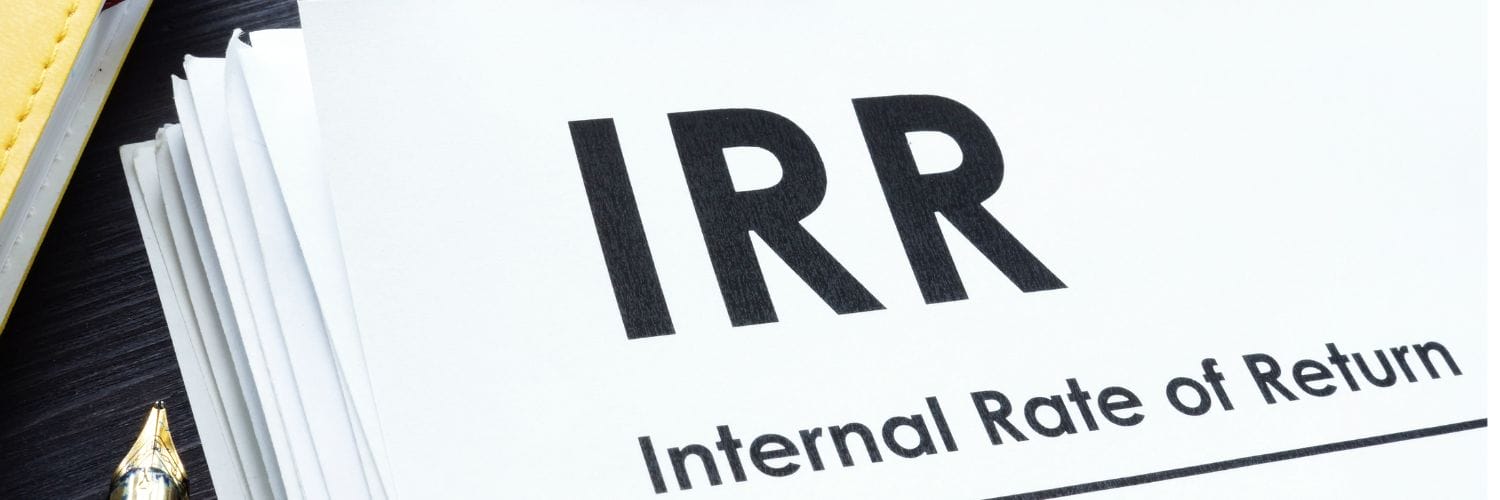Great investors from Warren Buffett, Charlie Munger, Mohnish Pabrai, and Peter Lynch all have different required rates of return they demand before investing. Using these rates helps them generate the great returns they have made over their investing careers.
The debate concernings the required rate of return is a subject discussed at all levels of investing, from beginners to the pros. And there is no accepted idea or concept everyone agrees is the best. Rather each needs to determine which required rate of return will work best for them.
My goal with today’s post is to uncover a few of these methods of determining a required rate of return and highlight these methods so you can determine which will work best for you.
Finding a required rate of return remains important, and its use in discounted cash flows equals one of the big three estimates we need to calculate to utilize that method to value any company. All three estimates are important, and some will argue that the required rate of return or discount rate remains the most important, while others will argue the terminal rate remains more important. Regardless of where you stand, determining the required rate of return will go a long way toward your success.
In today’s post, we will learn:
- What is the Required Rate of Return
- How Do You Calculate the Required Rate of Return
- Relationship Between Required Rate of Return and Stock Price
- Examples of Different Required Rates of Return and Their Impact
Ok, let’s dive in and learn more about the required rate of return.
What is the Required Rate of Return
As defined by Investopedia:
“The required Rate of return is the minimum return an investor will accept for owning a company’s stock as compensation for a given level of risk associated with holding the stock. The RRR is also used in corporate finance to analyze the profitability of potential investment projects.”

Buffett and Munger often refer to the required rate of return as the “hurdle rate.” In their idea, the required rate of return equates to the appropriate return necessary to take on the associated risk from the company in question.
The general idea is the higher the risk, the higher the required rate of return, which corresponds to the idea that you must have a higher risk to generate higher returns, a theory proposed by the efficient hypothesis and remains the main mantra of the “Bogleheads.”
There are multiple ways to calculate a required rate of return, and we will dive into those in a moment.
For our purposes today, think of the required rate of return as a discount rate we use in our discounted cash flows to calculate intrinsic value, we also use it in dividend discount models and any other discounting required for calculating intrinsic value.
Ok, let’s move on to calculating the required rate of return.
How do you Calculate the Required Rate of Return
A key point to remember when calculating or thinking about the required return rate is it represents the minimum return we will accept to invest in any particular company.

So, to buy Walmart (WMT), we must earn a certain return from our investment to compensate us for using our money. For example, if we invest in Walmart versus Target, and Target earns more over the same time, the return equals a real cost to use in terms of the overall return we could have earned.
There are two main ways to calculate the required rate of return:
Ok, let’s unpack the CAPM formula a little bit.
CAPM
Also known as the capital asset pricing modal and the cost of equity.
The cost of equity equals the required return; an investor must decide if the investment meets the capital return requirement. In other words, it is a fancy way of representing the minimum required to invest in a company.
The cost of equity, or the CAPM model, considers several factors that investors need to consider when investing in a company. The two ways for a company to grow are by utilizing either debt or equity.
Raising capital for the company helps generate returns, debt is cheaper, but the company does have to pay it back. Equity generally costs more because of the tax implications tied to equity in terms of tax advantages from interest payments.
Investors can tie the risk behind the CAPM model to the stock’s volatility, in the form of Beta, and the level of risk compared to the rest of the market, in the form of risk-free rates and equity risk, more on those in a moment.
The formula for the CAPM formula is as follows:
Cost of Equity = Risk-Free Rate of Return + Beta * (Market Rate of Return – Risk-Free Rate of Return)
There are a lot of big terms there, so let’s unpack those a little.
Risk-Free Rate of Return
The risk-free rate of return is the investment you would make in an investment with zero risks. Think of it as the required rate of return you would expect to take no risk on an investment.
Unfortunately, no investment carries zero risks anywhere I am aware, but the common idea, at least in the U.S., is to use government debt as risk-free rates.
This means that most investors use the long-term rates seen with the 10, 20, or 30-year treasury bonds; there are many differing opinions on the use of these lengths of rates.
Some investors like shorter durations, but the best explanation is to match the risk-free rates to the length of the valuation you are attempting.
For example, if you value a company for the short term, such as three months. Then, in theory, you would match the short-term bill rate with the risk-free rate.
Most investors choose longer durations, either the 10-year or 30-year rates. The great valuation professor, Aswath Damodaran, provided the best explanation I have heard on choosing the 10-year as your risk-free rate.
He chooses to use the 10-year rate for a couple of reasons. One is the idea that it remains best to match the duration of your risk-free rate to the time you discount the cash flows. If you invest in a zero-risk asset for ten years, that equals the required rate of return you would expect. The other idea is that the 10-year rates tend to have less fluidity than the 30-year rates on a historical basis, leading to better stability in our discounting of the cash flows.
To find the risk-free rate, you can locate it by googling the 10-year treasury rate, and voila!
Beta
Beta is a complicated subject, and for our purposes today, I will refer you to a deeper explanation from my friend Andrew’s great post.
Regarding the required return rate, Beta refers to the volatility related to our investment. Or in other words, it refers to the volatility related to the risk of investing in Walmart.
To find Beta, I use gurufocus.com or damodaran.com, as both offer great places to find the Beta for any stock we are analyzing.
Market Risk Premium
The market risk premium is the difference between the expected return and the risk-free rate on a theoretical level, also known as the equity risk premium.
Think of it as the opposite of the risk-free rate; rather than zero risks; it is the approximate rate of return investors would accept in exchange for a riskier investment.
Rather than dissecting the market risk premium, I use the damodaran.com website to find the number for my calculations. He calculates the market risk premium every year, and this year he has updated it fairly frequently, with the ongoing market fluidity.
The nice thing about the market risk premium is the stability of the number; it tends to stay rather constant.
The current market risk premium per Professor Damodaran is 5.00 percent as of January 1, 2023. Again, follow the links on his site, and you can find this number whenever you wish.
Next, let’s move on to the WACC.
WACC
Also known as the weighted average cost of capital. The WACC is the foundation of most discount rates or required rates of return for investors using the discounted cash flow.
For our use, I want you to understand that the WACC contains the cost of equity formula and the company’s debt.
As we mentioned above, all companies raise capital to invest in the company’s assets, whether it be debt, equity, or reinvesting equity. And the WACC formula encompasses both the equity and debt portions; by weighting each branch of the formula, you can get an approximation of each segment’s impact on the required rate of return.
There are multiple ways to calculate the WACC, either by using excel or the calculations from gurufocus.com.
One issue you need to remember if you use the calculations from gurufocus is that they use the static market risk premium of 6%. They state they want to use a static number to represent the minimum rate they would accept.
Other methods
There are two other ideas when determining your required rate of return based on how you think about intrinsic value and calculating the value.
Static value
Some investors use a form of the CAPM model as their required rate of return, but instead of determining differing risk-free rates, betas, and market risk premiums, they substitute fixed rates for every company they value.
For example, instead of assigning a specific risk-free rate, Beta, and market risk premium for Walmart, Target, and Costco based on each company’s Beta, for example.
Rather they will decide the cost of equity or required rate of return is a flat rate for each company.
To use the above companies, for example.
- Risk-free rate – 0.65%
- Beta – 1
- Risk-premium – 6%
All of this equates to a CAPM of 6%, which means that every company will assign a required rate of return of 6%, regardless of the company’s volatility.
For example, Walmart currently has a beta of 0.42, which means if we plug in our Beta, and current market risk premium, we get a value of 2.66%, which is quite a bit lower.
The other method of determining a required rate of return is to assign a number you want for all of your investments, such as 12 percent.
For them, that number encompasses all the risks they would assume in investing their money. So for every intrinsic value calculation performed, they would assign a 12 percent for each calculation.
Of course, it is easier, and I understand the simplicity, but I worry it assigns an unrealistic required rate of return depending on the macro conditions and the company’s volatility.
Ok, that wraps up our discussion on calculating the required return rate; we will put those into practice in a moment.
Relationship Between Required Rate of Return and Stock Price
There is a correlation between the required rate of return and stock prices. If the required rate of return rises, the stock prices fall regarding the intrinsic value calculation.

Of course, this makes sense intuitively. If nothing else changes, the company’s price needs to be lower for us to make our required rate of return on the investment.
If the risk-free rate or market risk premium rises, the required return rate might also be risky. If the Beta rises or falls, the required return rate might also change.
The risk-free rate, for example, is closely tied to the economy’s interest rates, and as those rises or fall, so do the treasury bills or bonds that connect to the risk-free rates.
The above examples help illustrate the sensitivity of each input to changes and how important it is to consider each input as you utilize them. Small changes can greatly impact your valuations, which can alter your investments.
Always remember that the price we pay matters greatly in the long run.
Ok, enough theory; let’s look at some of the methods of required rates of return on different investments.
Examples of Different Required Rates of Return and Their Impact
To help illustrate the importance of the impacts that different required rates of returns can have on our investments. I thought it might be a good practice to show examples of the same company’s valuation using different required rates of return to arrive at our valuation.

For example, today, I thought we could use Walmart and the different required rates of returns discussed earlier.
- CAPM or cost of equity
- WACC
- Flat inputs for CAPM
- The minimum required rate of return
The inputs to calculate our cost of equity or CAPM for Walmart:
- Risk-free rate – 4.00%
- Beta – 0.53
- Market Risk Premium – 5.00%
If we plug all those into the formula for CAPM:
Cost of Equity = Risk-Free Rate of Return + Beta * Market Risk Premium
Cost of equity = 4% + 0.53(5.00%)
Cost of equity = 6.65%
The WACC I will pull from gurufocus.com, which for the TTM numbers equals 6.41%.
Now, if we plug all of our required rates of return into a DCF using the same growth rates and terminal values, we can see the impacts the required rate of return can have on the final value.
Assuming for our model, we have the following:
- Free cash flow per share – $1.98
- Free cash flow growth 10-year average – 6.33%
- Terminal rate – 4%
Now we will plug in our required rates of return or discount rates into the DCF to see what different values will compute.
- CAPM – 6.65%
- WACC – 6.41%
- Flat CAPM – 6%
- Minimum Required Rate of Return – 12%
The values in the corresponding order of required returns:
- $35.10
- $36.93
- $38.40
- $22.97
You can see from the example above that as the required rate of return rises, the company’s intrinsic value falls, and vice-versa. It also illustrates the importance of the terminal rate; as the rate gets closer to the value of the required rate of return, the higher the asset price will climb.
As we get closer to the value of one, the higher the company’s value. The reason for that is the current interest rates in the market. The lower rates drive down the cost of equity, as evidenced by the lower risk-free rates and market risk premiums, and likewise, lower costs of equity also impact the WACC by driving it lower.
The lower interest rates also impact the cost of debt as well. With the lower interest rates come lower interest payments and cheaper debt to help fuel any growth the company might look for, as well as locking in those lower rates over a longer horizon, which impacts the WACC of any company.
Suppose you look across the market right now. In that case, you see lower discount rates with lower interest rates, which makes it more important than ever to ensure your inputs into your calculations include a margin of safety.
Final Thoughts
The price we pay for any investment matters greatly and can have a huge impact on our long-term returns; determining the correct required rate of return is crucial to our success.
There are many ways to determine the required rate of return on your investments, and no one can tell you which is the best. Rather it is up to you to decide your risk tolerance and how much risk you can stomach.
Depending on that risk profile will go a long way towards determining what required rate of return you wish to earn.
I vote to go with the WACC, as it encompasses both the equity portion of the company, as well as the debt component. Plus, it allows me to adjust that risk and weighting for each company, as each company’s situation is unique.
Whichever you decide to go, be CONSISTENT, and stay with what works for you. Mixing and matching required rates of return are deadly and will lead to losses and frustrations.
Well, that is going to wrap up our discussion for today.
As always, thank you for taking the time to read today’s post, and I hope you find something of value on your investing journey.
If I can be of any further assistance, please don’t hesitate to reach out.
Until next time, take care and be safe out there,
Dave
Related posts:
- CAPM Assumptions, and its Practical Application to DCFs The CAPM (Capital Asset Pricing Model) is commonly used to estimate a discount rate for cash flows in a DCF calculation (in particular, the cost...
- The 3 Inputs for the Cost of Equity Formula Updated 12/19/2023 The value of any financial asset is the present value of its future cash flows discounted to the present. That is the basis...
- Weighted Average Cost of Capital Guide (+WACC Calculator Excel Download) The weighted average cost of capital (WACC) is a cornerstone of any discounted cash flow valuation and a fundamental learning for every investor’s toolbox. This...
- Average Discount Rate for the Top Companies in the S&P 500 Setting a reasonable discount rate is critical to getting a reasonable valuation. Like with history, I believe that getting context on averages, in this case...
